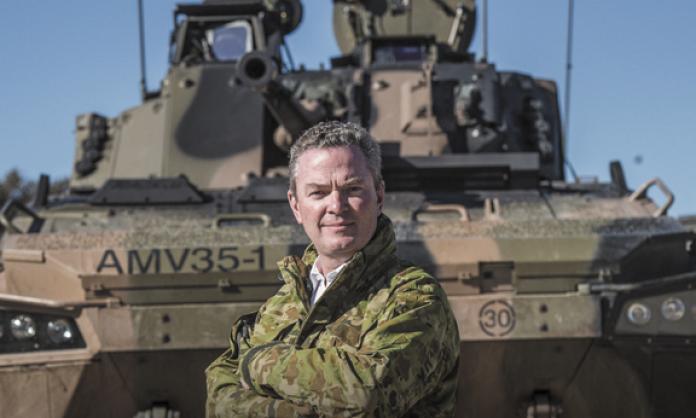While practising cutbacks for working class Australians, the federal government has announced a torrent of cash for the merchants of death, otherwise known as Australia’s defence industry.
The Turnbull government has allocated $3.6 billion to establish a Defence Export Facility to enable local weapons manufacturers to boost their exports. In the event of banks or other financial institutions being unwilling to stump up the cash to finance exports of military supplies, the Defence Export Facility can help arms manufacturers seal the deal.
The contrast with its treatment of others dependent on public funds could not be starker.
The government never hesitates to tell welfare recipients that they are lucky to receive their miserly fortnightly allowances. It forces beneficiaries to degrade themselves by jumping through hoops and berates them as bludgers on the public purse. It is currently humiliating the unemployed with the Basics Card and mandatory drug testing.
University students are being hit with ever increasing fees and crowded classrooms, the announcement of another $2.2 billion in cuts to higher education being the latest attack.
But if you’re an expensively suited executive at one of the world’s largest arms manufacturers – say, Boeing, Raytheon, Thales, Lockheed Martin, BAE Systems or Northrup Grumman, which operate in Australia – or a local manufacturer such as shipbuilding firm Austal, the door will be freely opened to government largesse.
Just like Adani, to whom the government is desperate to hand over $1 billion from the Northern Australia Infrastructure Fund.
The government hopes that, with funding at the ready, the arms manufacturers will substantially increase exports and lift Australia from 20th to 10th in world arms sales.
This is an evil business. As Tim Costello from World Vision put it: “Millions of people across the world are running from violence, and our answer to that is to produce more weapons. Whatever money we make from this dirty business will be blood money.”
Amnesty International, Oxfam Australia, Save the Children and the Greens have also slammed the plan. The ALP, however, repeated the government’s talking points pretty much word for word. When in government, it too has handed out money to the arms industry.
The government tries to assure us that it has strict controls to ensure that the weapons will not end up “in the wrong hands”. It says that sales will be restricted to countries compatible with Australia’s foreign policy.
But that’s exactly the problem – Australia’s partners in crime include Saudi Arabia and the Gulf states. Its chief partner is the United States, responsible for criminal acts of aggression and war that have cost hundreds of thousands of lives in the last 15 years alone. The US is Australia’s biggest buyer of military equipment. And barely a day goes by without Donald Trump threatening to blast some country to bits.
The government is selling the handouts with reference to job creation. But, as the Campaign Against the Arms Trade in Britain has repeatedly demonstrated, the defence industry is an extremely poor creator of jobs.
Much more effective, dollar for dollar, if the government were concerned about job creation, would be to put the money into renewable energy production, constructing public housing and expanding public transport systems around the country.
The money would be better spent on pretty much anything that warms, cools, houses, transports or connects people, rather than blows them up.
The government doesn’t give a damn about job creation.
Some of this is just money for mates. But there’s a deeper motive at work. Underlying this initiative is the much more aggressive Australian military posture set out in the 2016 Defence White Paper.
The White Paper made clear the government’s ambition to promote Australian firepower far from our shores, working in tandem with the United States. Hence the huge outlays on military equipment – the Coalition boasts of an extra $200 billion over 10 years.
Central to Australian military expansion is a strong local arms industry. Without it, Australia’s ability to rampage around the world would be compromised. But the industry is incapable of standing on its own feet.
Hence the Defence Export Facility. Hence tens of millions of dollars set aside to promote Australian weapons in overseas markets. Hence the diversion of large amounts of university and CSIRO research funds to the industry.
Australia has its own military-industrial complex, a miniature version of the one in the US. Like that one, it lives off blood and sacrifice and depends for its existence on the stripping of support for the means of living to benefit the production of the means of killing.









